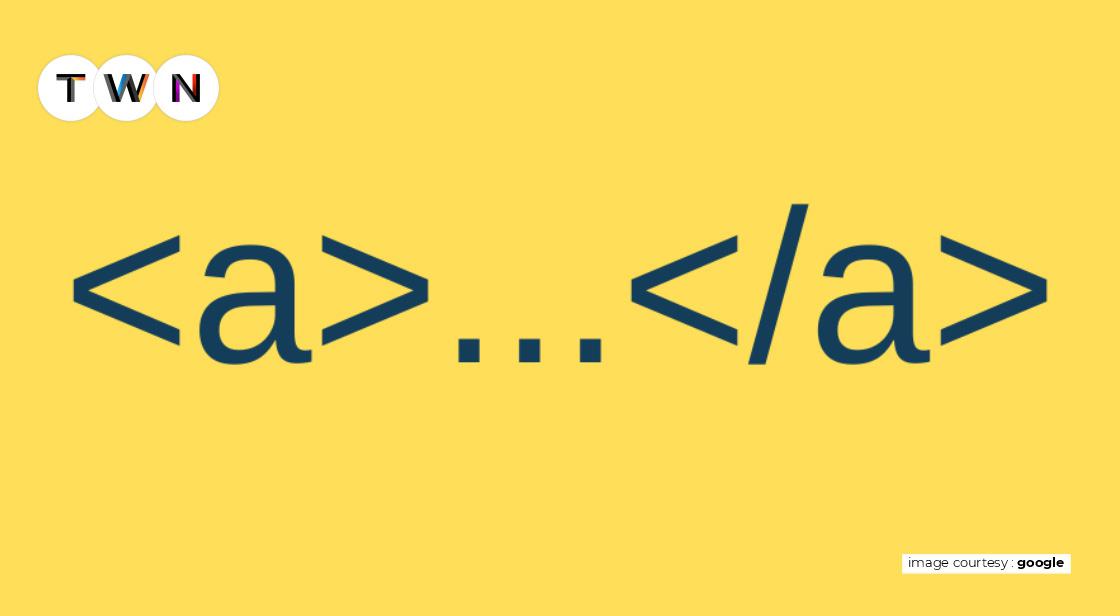What is Anchor Tag, Why it is Important & How to Optimize It!

Blog Post
Many people have heard of links by now.
Links comprise the web's infrastructure and allow users to navigate from one webpage to another.
While links are occasionally included in the text without an "anchor" (e.g., https://www.thinkwithniche.com/blogs), they are usually inserted with an "anchor" to improve the user's reading experience.
Let's look at what is anchor tag is and why it is important. In addition, learn how to optimize your anchor text for SEO. #TWN
What is Anchor Tag?
The anchor tag is a clickable text that connects two web pages. The target URL should, ideally, include relevant information regarding the subject discussed on the source page.
A link title, link text, or link label is another name for an anchor tag.
Why is Anchor Tag Important?
Simply put, anchor text gives both users and search engines context. The link label describes what the user will see on the linked page if he clicks on it. Search engines, on the other hand, use anchor text to index and rank web pages.
It is where the concept of relevance comes into play. If the referenced content is irrelevant to the topic at hand, your website visitors may suffer as a result of a poor user experience. And, when it comes to search engines, your website will be penalized because the linked content adds no value to the user.
The careful use of anchor text can boost your readers' trust in your brand and the information you share on your website. It also helps your SEO efforts by sending all the precise signals to search engine crawlers.
How to Add Anchor Links
Let's take a look at the components of a hyperlink and check where the anchor text fits in.
The anchor element tags, a rel="noopener" target=" blank" href attribute, and the anchor text make up a basic hyperlink (see image above). Begin with an opening anchor tag: <a> to include a hyperlink with a link label in your content.
Then, inside the opening anchor element, add a rel=" no opener" target=" blank" href attribute (rel=" noopener" target=" blank" href="") to introduce the target URL. Then, between the quotation marks, insert the URL of your desired webpage.
Finally, the anchor text should be placed between the opening and closing anchor tags.
You may want to open the link in a new window depending on the content. The option is typically used if you want to link to a helpful resource on another domain while still keeping your readers' attention. Simply add the target attribute and set it to "_blank" to accomplish this:
<a rel=" noopener" target="_blank" href="https://www.yourwebsite.com" target="_blank">Your Anchor Text Goes Here</a>
Images can also serve as anchors. Please remember that the HTML code syntax differs slightly. Instead of including the image's source within the opening anchor tag, insert the <img> tag between the opening and closing anchor tags. After that, simply add the src="" attribute and paste the source URL of your image within the quotation marks.
You might have noticed another alt attribute. People who are visually impaired and use screen readers or web crawlers require text-based information to understand what is displayed on the image. As a result, it's a good idea to include a description of your images in the alt attribute.
Types of Anchor Text with Examples
Before we get into how to use anchor text for SEO, let's look at the different types of link labels.
Exact Match
The exact match anchor text, as the name implies, is a particular keyword whereby the target webpage is attempting to rank. Assume you own a knitting supplies store and want to rank higher for the keyword "knitting patterns."
One approach is to have a relevant domain link to your knitting patterns webpage by using the same keyword. However, use them sparingly. Otherwise, you risk activating Google's spam filter and being penalized for spammy behavior.
Phrase Match
Similarly, the phrase match link title includes a specific phrase for which your website is attempting to rank. Returning to the knitting pattern example, those who are new to knitting may be looking for a simpler pattern. As a result, they might look up "knitting patterns for beginners."
Partial Match
The phrase match label text is similar to this type of anchor text. The only distinction is that rather than using the exact keyword phrasing, a variation is used.
For example, "knitting patterns for beginners" = "knitting pattern beginner's guide."
Branded
Branded anchor texts and website names are fairly common. For example, if I want to refer to the homepage of this blog, I can use ThinkWithNiche’s Blog as my link label. Have you noticed what I did there?
Generic
One of the most well-known anchor texts. These are typically used for advertisements and CTA buttons. Common generic anchor text phrases include "click here," "read more," and "buy now."
Naked URL
Remember how I linked to ThinkWithNiche's Blog at the beginning of the article by pasting "https://www.thinkwithniche.com/blogs?" A naked URL anchor text is a link text that uses the URL as an anchor.
Image Anchor/No Text
A picture is worth a thousand words, as the saying goes. It can, fortunately, also be used as an anchor. Remember to include descriptive text with your image, as search engines rely on it to determine what the image is about.
How to Optimize Your Anchor Tag
Simply becoming acquainted with the various types of anchor text will not guarantee you higher SERP rankings. To get you started, here are some best practices for optimizing your anchor text.
1. Make clear the anchor text is distinguishable.
Many platforms provide various webpage customization options. Some of these incorporate the anchor into the surrounding text. Assure users that the anchor is clearly visible and clickable.
2. Don't mislead your readers.
When linking to other websites, always keep your promise and provide the agreed-upon content.
3. Preserve the natural flow of your writing.
While most people try to approach this task strategically, focusing on exact phrase matches, natural language doesn't work in this manner.
4. Maintain the relevancy of your links.
Remember to review and update your links if you provide time-sensitive content.
5. Always account for search intent.
Remember to consider the reader's search intent and make sure it corresponds with the context of your content.
6. Avoid keyword stuffing.
Keyword stuffing will undoubtedly incur the wrath of the Penguin update, which penalizes over-optimized anchor texts and low-quality hyperlinks.
7. Diversify your anchor text profile.
A natural link profile is diverse. Excessive link label manipulation will result in your website being penalized.
8. Link text should be succinct.
Although Google considers both the anchor and the surrounding text, avoid anchoring long sections of text.
9. Clean up URLs when using naked anchors.
Nobody enjoys long, winding URL strings. Keep it brief and straightforward.
10. Maintain an inventory of your links and anchors.
Keep a library of all your links and labels handy not only for optimization but also for site audits.
So, what's next? The best way forward is to develop an optimization strategy that benefits both your customers and your company.
You May Like
EDITOR’S CHOICE












